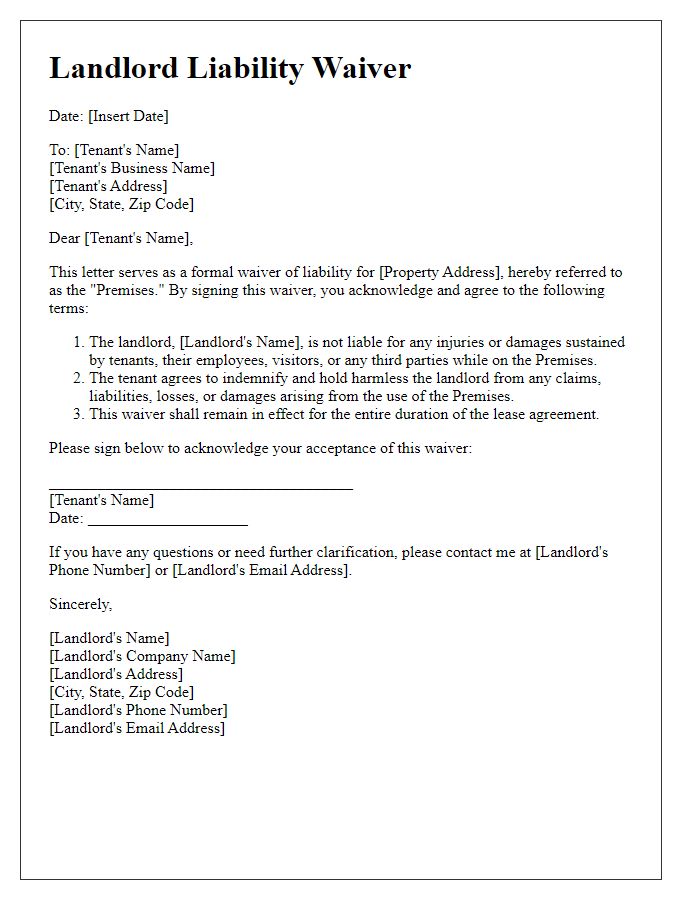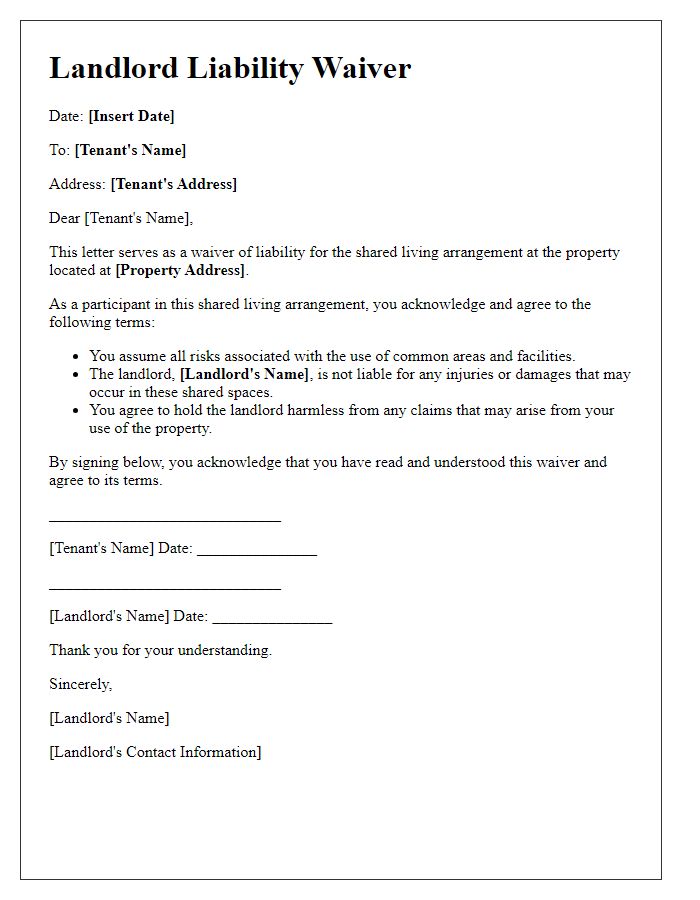Are you a landlord looking to protect yourself from unforeseen liabilities? Understanding the ins and outs of a liability waiver can be the key to safeguarding your interests while maintaining a good relationship with your tenants. This official document not only clarifies the responsibilities involved but also sets clear expectations for both parties. Curious to learn more about creating an effective landlord liability waiver? Read on!

Clear identification of parties involved.
In a landlord liability waiver, it is crucial to clearly identify all parties involved. This includes the full legal name of the landlord, which may be an individual or a property management company, along with their contact information. The tenant's complete legal name must also be included, as well as their current address and any relevant identification numbers if applicable. If the property is a rental unit located at a specific address, that must be clearly stated as well. Clear identification ensures that all parties understand their roles and responsibilities outlined within the waiver. Each participant's signature, along with the date of the agreement, is essential to validate the document legally.
Detailed description of property.
The property located at 123 Maple Street, Springfield, features a two-story residential structure built in 1995, encompassing approximately 2,500 square feet of living space. This recently renovated home includes four bedrooms, each with ample closet space and natural light, and two full bathrooms, one equipped with modern fixtures. The spacious living room showcases hardwood flooring and a fireplace, while the kitchen boasts stainless steel appliances and granite countertops. The outdoor area presents a well-maintained backyard spanning 0.25 acres, complete with a patio and landscaping. Key amenities include central heating and air conditioning, off-street parking for three vehicles, and proximity to local schools, parks, and shopping centers, enhancing the property's appeal for family living.
Specific liabilities being waived.
A landlord liability waiver often involves specific liabilities associated with rental properties, such as slip and fall incidents due to icy sidewalks or improperly maintained stairs, and damage to personal property during maintenance or repairs. Tenants may waive claims for injuries occurring on the premises, especially related to common area usage like swimming pools or gyms. Additionally, waivers might include stipulations about landlord responsibilities in natural disasters, such as floods or earthquakes, and extend to personal belongings lost during pest control treatments. Landlords may also clarify that they are not liable for theft or vandalism on the property, putting the onus on tenants to secure their possessions. Transparency about these specific liabilities ensures that both parties understand the extent of responsibility relinquished by tenants during the leasing period.
Disclaimer of legal advice.
Landlord liability waivers serve to protect property owners from legal claims relating to tenant activities on rental premises. These documents outline the relinquishment of legal rights by tenants regarding injuries or damages that may occur on the property. It is crucial to understand that a waiver is not a substitute for legal counsel. Tenants must fully comprehend the implications of signing such a document, which may include releasing the landlord from responsibility for negligence or other liabilities. Consulting with legal professionals can provide clarity on personal rights and obligations before entering into such agreements. Properly drafting and reviewing this waiver can ensure its enforceability in a court of law.
Signature lines and date.
Landlord liability waivers are critical legal documents that outline the terms under which a landlord minimizes their liability for certain incidents on their property, typically involving tenants or visitors. In this context, a landlord liability waiver should include necessary signature lines for both parties involved, as well as a designated area for the date the document is signed. These components ensure that all parties acknowledge the terms and conditions of the waiver. Additionally, having clear signature lines establishes consent and agreement to the terms, making it easy to identify who has accepted the waiver. It is advisable to include the printed names of the signatories alongside their signatures for clarity.
















Comments